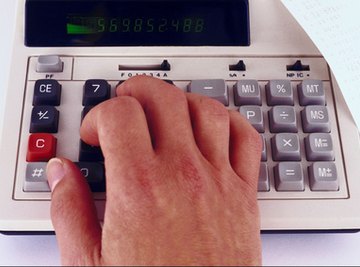
In general, a ratio compares two quantities that have the same units, for the purpose of determining the numerical value that relates the two quantities.
For example, it is common in cake recipes that the ingredients have to be included in weight ratios. The weight of the sugar in the cake should be equal to the weight of the flour, but that doesn't mean that they will be added in equal volumes. Why is that?
Density Basics
First, the general mass density formula is the mass that occupies one unit of volume, per unit volume. A density is simply a way of describing how some material is distributed. There are many kinds of densities: Any quantity that is described as an amount per unit area, volume or other spatial unit is a density.
It is helpful to remember the densities of some common materials as a reference when comparing other materials. The density of water is 1 g/mL, and the density of air at standard pressure and temperature is around 1.18 times 10-3 g/cm3.
Calculating the Density of Air
The air density calculation depends on several factors, such as:
- atmospheric pressure
- P
- temperature
- T
The ideal gas law is the best way to determine the relationship between pressure, temperature, and air density, ρ.
Quick ways to Estimate Changes in Air Density
Let's hold the pressure constant, and see what happens if the temperature changes. If the temperature increases, the denominator will increase while the numerator stays constant. This means that the air density would decrease. Similarly if the pressure increases while the temperature stays constant, the air density would increase.
It is helpful to remember these relationships, or simply the ideal gas law, in order to be able to quickly determine how air density depends on environmental factors such as pressure and temperature.
It can also be useful to calculate air density ratios to determine if environmental factors have increased or decreased in order to result in the density change.
What is a Density Ratio?
A density ratio is simply a way to compare two densities that are in the same units. Commonly, densities for solids and liquids are compared to the density of water. For gases, the standard comparison is air. This ratio has a special name due to the standardization: specific gravity.
Specific gravities are therefore unitless, and are simply a numerical factor that can be multiplied by the standardization medium (water or air depending on the material you are considering), to determine the density of the material.
The Subtleties of the Density Ratio for Cake Baking
What about the cake? How can we determine how much sugar and flour our cake needs? Remember that the weights of the two should be similar, but that does not mean we can dump a cup of each into our batter.
The density of granulated sugar is 0.85 g/cm3, and the density of all purpose flour is 0.53 g/cm3. Immediately, we can calculate the density ratio of sugar to flour: 0.85/0.53 = 1.6 . From this, we know that in the same volume of sugar and flour, the sugar will be 1.6 times as heavy.
So if a recipe asks for 1 cup of sugar, we need to add 1.6 cups of all purpose flour so the ratio is maintained and our cake rises properly.
It is clear that ratios are a great way to quickly determine how masses, and volumes of different materials are related to each other.
References
Warnings
- The references all use different units of measure. Be sure to check which units you are using.
About the Author
Lipi Gupta is currently pursuing her Ph. D. in physics at the University of Chicago. She earned her Bachelor of Arts in physics with a minor in mathematics at Cornell University in 2015, where she was a tutor for engineering students, and was a resident advisor in a first-year dorm for three years. With this experience, when not working on her Ph. D. research, Gupta participates in STEM outreach activities to promote young women and minorities to pursue science careers.
Photo Credits
Calculator image by Alhazm Salemi from Fotolia.com
